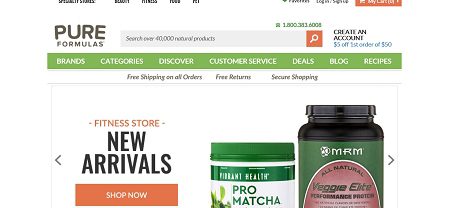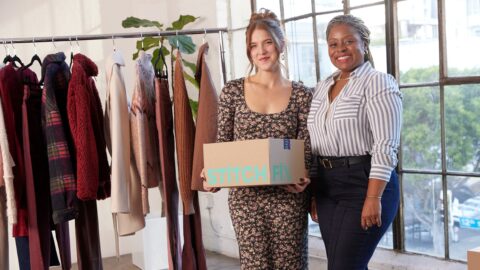PureFormulas makes every effort to match the right health and supplements products with every customer. “In the supplement world you don’t like a product based on looks, and it’s important to get the one that is right for you,” said Lars Furtwaengler, VP of Ecommerce and Merchandising for the online retailer.
At PureFormulas, personalization efforts go beyond matching people and products. The brand uses a range of techniques from the moment a customer lands on its site through checkout and beyond. The retailer manages products and promotional offers that it presents based on broad categories like gender and age as well as specific actions taken by users, including their browsing and purchase behaviors.
It turns out that all that granular individualization is good for business. “We see approximately a 30% greater likelihood for a customer to purchase if they interact with our content, and a 25% higher AOV [Average Order Value] for people who have interacted with personalized content versus those that haven’t,” said Furtwaengler in an interview with Retail TouchPoints.
Advertisement
Narrowing Down An Ocean Of Choices
The current trend toward increased personalization aligns well with the business challenges of a retailer like PureFormulas, which offers a total of 40,000 products between its supplements division and its beauty, food, fitness and pet specialty stores. “We offer a large pool of products, and it can be overwhelming in terms of choices, so we want to guide users to the right product for them,” said Furtwaengler. “We need to do a good job of educating our customers.”
Personalization efforts are ongoing, incremental processes at PureFormulas: “For a first-time user coming to the site, we can personalize based on their entry point, for example whether they came from a social network or via search,” said Furtwaengler. “We can provide an introduction to the site tailored to the device they are using — mobile, desktop or tablet. Then anything they do, whether it’s viewing an individual product or a product category; the search terms they use; and whether they add a product to their cart, will allow us to be more and more granular based on the steps that they take.”
When “browsers” become “buyers,” PureFormulas gains a wealth of demographic data along with the beginning of a purchase history. When these shoppers return, cookies identify them and allow PureFormulas to bring all this data to bear during subsequent interactions.
Even if a site visitor doesn’t actually complete a purchase, the retailer can glean a fair amount of information based on what they search for. “If you’re looking for a women’s multivitamin or searching for menopause-related products, we can assume you’re a woman, or you are shopping for one,” said Furtwaengler. “We can make assumptions based on what you do on the site, and from there proceed to presenting what makes the most sense to you in terms of products.”
Real-time offers also can be keyed to time of day: “At lunch time we’ll offer lunch recipes, while if someone is logging in late at night we’ll offer sleep remedies,” said Furtwaengler. “We track data on all of this and look at what works and what doesn’t. It’s never a blank canvas with users, and we can quickly learn and get better and better at personalizing the content.”
Focus On Mobile Experience
The retailer also targets offers based on the device a shopper is using. “We struggle with the fact that there are generally lower AOVs for mobile, so if you’re a mobile user at checkout and you fall within a certain value range as a customer, we might offer a $10 add-on for items within your preferred product categories,” said Furtwaengler.
PureFormulas uses a number of solutions to tailor its content and offers, including Oracle ATG and Endeca to set up the site’s personalization rules and create dynamic web pages, and Mobify to manage campaigns on its mobile-optimized site. “We also spend a lot of time with Google Analytics data for our A/B testing efforts,” said Furtwaengler.
His advice for retailers just beginning their own personalization efforts is to start small: “Currently we have over 50 user segments, so we are very granular, but it’s best to start broad, dividing customers by gender and a few age groups,” Furtwaengler recommended. “Also, base your decisions on data, not assumptions. Use the data to try to understand why users buy certain products and why they do, or don’t do, certain things. Overall, online shoppers have come to expect a personalized shopping experience, so if you don’t follow that trend, you’re way off.”















